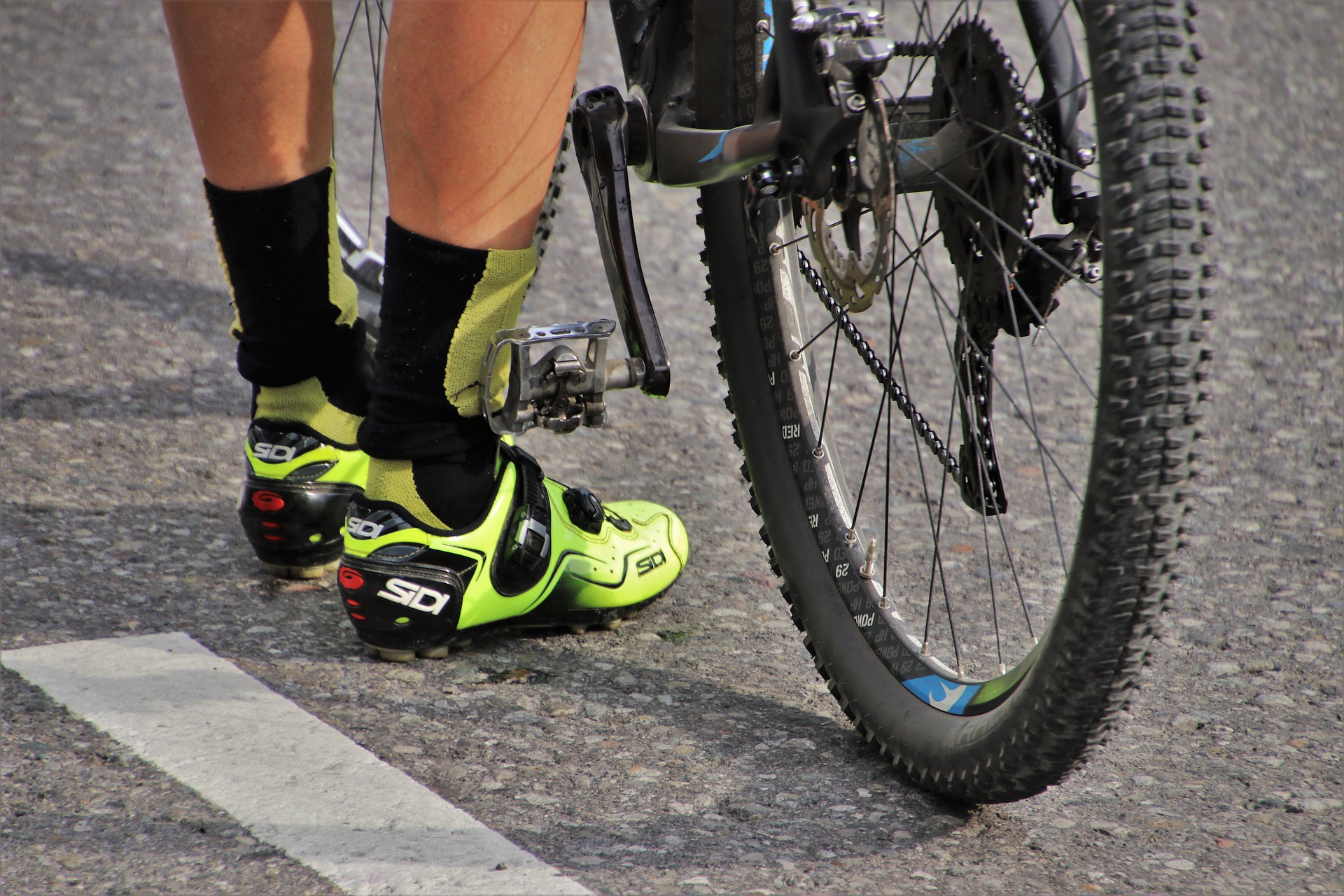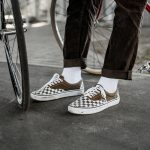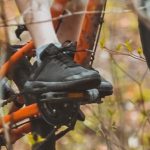As mountain biking continues growing in popularity, many new riders face questions about the right footwear for hitting the trails. Dedicated clipless and flat pedal shoes get recommended constantly, but they also add significant costs on top of a new bike purchase. This leaves many asking – can you just use hiking shoes or boots for mountain biking instead?
The Affordable Footwear Option
Hiking footwear seems like it could work for mountain biking in a pinch. The gripper rubber soles, foot protection, and ankle support align with many needs out on the trails. And using shoes or boots you already own provides a free or low-cost footwear solution for starting the sport.
At the same time, hiking shoes weren’t really designed specifically with mountain biking’s rigors in mind. Their flexible midsoles, lower cut around ankles, and lack of pedal grip could potentially cause issues. But do these detriments mean they can’t work at all for riding?
Analyzing the Pros and Cons
This article takes an in-depth look at the pros and cons of using hiking shoes for mountain biking. We’ll examine areas where they may suffice for more casual trail riding. But we’ll also point out the significant limitations that likely require upgrade to proper bike footwear as skills progress.
By understanding hiking shoes’ strengths and weaknesses for biking, riders can make more informed decisions. Those on tight budgets can determine if inexpensive hiking shoes make an okay stop-gap initially. While more ambitious riders will see why investing in dedicated mountain bike footwear gets highly recommended sooner than later.
Decent Pedal Grip Potential
One advantage hiking shoes offer is their rubber lugged soles can actually grip pedals fairly well in certain scenarios. While not designed for it, the aggressive tread patterns and sticky rubber compounds help achieve some level of pedal grip and traction, especially on platform pedal designs.
More lugs across the footprint increase the shoe’s pedal contact patch. And softer, stickier rubber formulas enhance friction against the pedal body and pins. So when kept weighting heavily on proper pedaling surfaces, hiking shoes can somewhat hold their own on less intense terrain. Just don’t expect premium levels of pedal lockdown.
Walkability as Designed
As their name implies, hiking shoes do excel when needing to dismount and walk sections of trail. Their deep, aggressive lugs and rubber tread bite into loose dirt, mud, roots and rocks much better than skate shoes or sneakers. The added traction shines when climbing steep pitches, side-hilling across fall lines, or navigating rock gardens on foot.
Many hiking shoes incorporate protective toe boxes, heel cradles or extra ankle security too. These elements guard the feet from off-bike impacts and help prevent rolled ankles from unstable surfaces as you hike along. For trails involving a fair amount of hiking between ride sections, hiking footwear keeps making good sense.
Breathability and Climate Versatility
Another benefit of hiking boots and shoes is their ability to handle a wider range of temperatures and weather conditions compared to most bike-specific shoes. Built for variable climates, hiking footwear incorporates advanced materials and design features to keep feet well-ventilated and cool in heat, or warm and dry if fighting colder temps and moisture.
Waterproof liners and uppers provide weather protection. While still allowing wicking meshes and air channels to expel sweat vapor. This versatility helps optimize comfort whether riding in sweltering deserts or chilly spring showers. You don’t necessarily get that climate adaptability in very specific-use mountain bike shoes.
But Soles Lack Power Transfer
While hiking shoes offer some advantages, their flexing midsoles create the biggest limitation for efficient pedal power transfer. Unlike mountain bike shoes with super stiff shanks and platforms, hiking soles remain quite flexible and shock absorbing by design. While great for walking and scrambling, all that flex gets wasted energy on bikes.
As feet compress into those soft midsoles during pedal strokes, watts get dissipated into deformation rather than translated into rear wheel momentum. Riders with hiking shoes essentially experience power losses compared to proper bike shoes. More effort goes into just flexing your shoes instead of applying force into the pedals and forward propulsion.
Vague Foot Positioning Feeling
Another issue with hiking boots and shoes stems from their lack of secure conforming footbeds and heel cups. Most prioritize generous volumes to accommodate foot compression from extensive walking. But this looser fit proves detrimental for maintaining consistent cycling form through corners and rougher sections.
Well-designed cycling shoes aim to virtually eliminate heel lift and unwanted foot movement inside. But with hiking shoes, feet move around more and positioning feels vaguer and inconsistent as trails get rowdier. The sloppy fit hinders weighting the correct parts of shoes at the right times for maximum control and confidence. It also allows feet skating inside leading to hot spots and chafing over longer rides.
Exposed Ankles and Lack of Protection
While excellent for casual hikes, hiking shoes’ lower ankle cuts and lack of reinforcement becomes a major limitation on mountain bikes. Most bike shoes feature generous ankle protection and durable uppers capable of handling pedal strikes, bushwhacks, and unplanned tumbles off the bike. But hiking footwear leaves ankles more exposed to potential injuries.
Even a brush against rocks, roots or trees could cause gashes and abrasions to bare ankles. And any errant pedal or pinion smashes can quickly lacerate or swell exposed ankle areas. Gore and puncture protection also proves lacking compared to burlier bike shoe uppers. This increases the likelihood of dealing with sprained ankles, severe bruises and other ailments from those inevitable on-trail tumbles when pushing limits.
Limited Flat Pedal Control
For flat pedal riders, hiking shoes really struggle to maintain controlled and connected footing on the pedals once terrain gets more aggressive. Hiking soles simply can’t bite and hold on pedals quite like shoes designed from the ground up to grip those pins and concave platforms.
On smoother sections, hiking shoes potentially hold decently secure traction. But start throwing substantial impacts and forces in, feet quickly displace and get knocked askew. Even with precaution, feet just don’t stay planted and driving pressure through pedals consistently like more rigid cycling soles permit. Less control when rallying terrain hard directly equates to slower, sketchier riding feel.
Durability Questions
Finally, the construction and materials in hiking footwear typically can’t withstand extended mountain bike abuse compared to kicks purpose-built for cycling. While tough on trails, hiking shoes still utilize plenty of mesh panels, seams and lower-density cushioning ultimately vulnerable to tearing and wear.
The forces generated by constantly skidding shoes against pedals, or kicking through rock and root gardens, rapidly takes a toll on hiking footwear in ways their designs never intended. Blown-out midsoles, shredded uppers, and delaminating soles quickly turn your pricey hikers into trashed relics without the resilience of reinforced bike shoes.
Okay for Casual Beginners on a Budget
Despite some clear limitations, hiking shoes can still provide an okay footwear option in certain situations. For complete beginners just putting in easy trail miles around their neighborhood, hiking shoes make a decent hackjob solution before upgrading to cycling footwear. The reassuring traction and protection helps instill some initial confidence compared to just wearing sneakers or skate shoes.
Likewise, riders prioritizing more casual, medium-intensity trail riding don’t necessarily need the ultimate efficiencies and control birthed from pricier clipless or flat pedal cycling shoes. As long as they understand hiking shoes’ constraints in power transfer, foot security, and durability, the level of performance may remain acceptable without spending up. Just don’t expect to be mobbing downhills or putting down blistering race laps.
But Limitations Quickly Surface
However, as mountain biking difficulty, terrain intensity, and personal ambitions ramp up, the limitations of using hiking shoes become increasingly apparent and unacceptable. Losing precious watts through mushy soles drains small reserves of power needed for cleaning tough sections. Feet disconnecting at the wrong moments spoil advanced techniques and control. And the breathability won’t matter if boots swiftly get chewed to shreds by trail abuse.
For riders seeking maximum performance and confidence to progress skills over technical, aggressive terrain, dedicated cycling footwear quickly becomes mandatory. The efficiencies gained, grip achieved, and protection provided prove invaluable investments in enhancing mountain biking abilities, safety and enjoyment. Casual cruisers may find hiking shoes passable for the time being. But more serious enthusiasts will want proper kicks before hitting anything too gnarly.
Summary
For their cost and accessibility, hiking shoes actually hold a few minor advantages leveraging them as emergency mountain bike footwear. Their grippy tread patterns, weather protection, and walkability arguably beat using casual sneakers or skate shoes without any consideration for technical trails.
However, their lack of power transfer, foot security, and impact protection also significantly hold them back compared to proper cycling footwear. While potentially okay for beginners or lower intensity rides, hiking shoes ultimately impose hard limitations on pedaling efficiency and bike control in more demanding situations.
Overall, hiking footwear makes a decent one-off or highly affordable stopgap for casual riding while you save up for proper bike shoes. But experienced riders quickly run into hiking shoes’ shortcomings. So view them as an absolute bare minimum for gentle, neighborhood-style trail use until you can invest in purpose-built cycling shoes optimized for mountain biking’s rugged requirements. Don’t let hiking shoes’ available “beta traction” hold you back once you catch the mountain biking bug.







